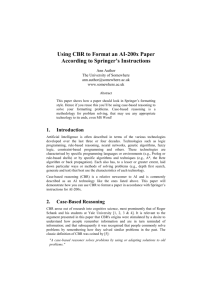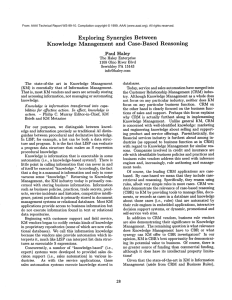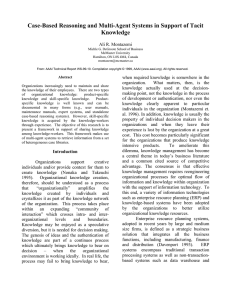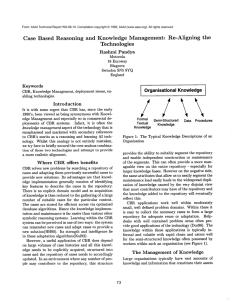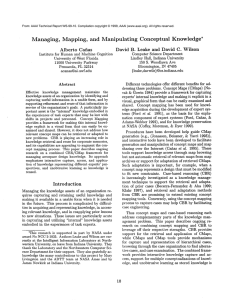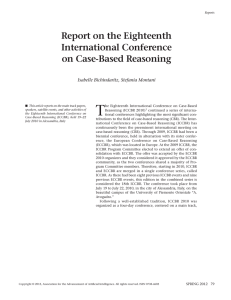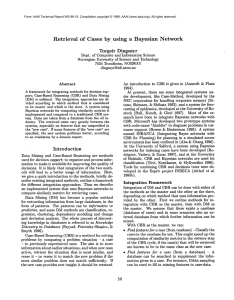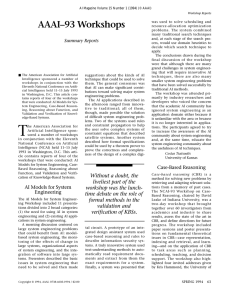Case-Based Reasoning for Weather Prediction
advertisement
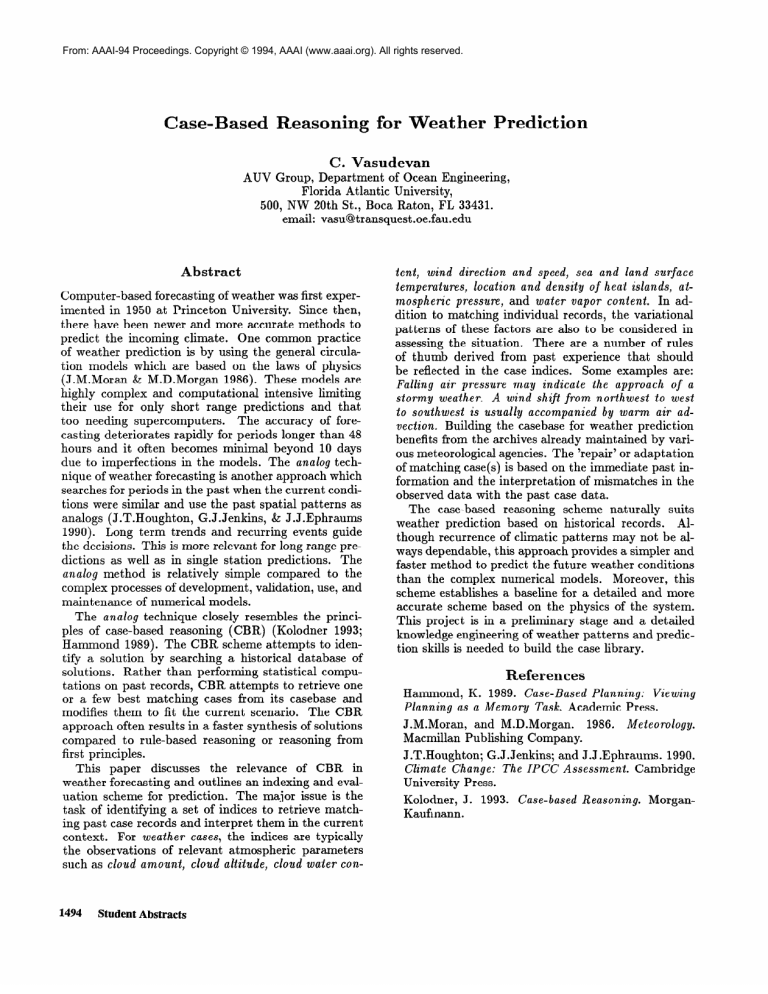
From: AAAI-94 Proceedings. Copyright © 1994, AAAI (www.aaai.org). All rights reserved. Case-Based Reasoning for Weather Prediction C. Vasudevan AUV Group, Department of Ocean Engineering, Florida Atlantic University, 500, NW 20th St., Boca Raton, FL 33431. email: vasu@transquest.oe.fau.edu Abstract Computer-based forecasting of weather was first experimented in 1950 at Princeton University. Since then, there have been newer and more accurate methods to predict the incoming climate. One common practice of weather prediction is by using the general circulation models which are based on the laws of physics (J.M.Moran & M.D.Morgan 1986). These models are highly complex and computational intensive limiting their use for only short range predictions and that too needing supercomputers. The accuracy of forecasting deteriorates rapidly for periods longer than 48 hours and it often becomes minimal beyond 10 days due to imperfections in the models. The analog technique of weather forecasting is another approach which searches for periods in the past when the current conditions were similar and use the past spatial patterns as analogs (J.T.Houghton, G.J.Jenkins, & J.J.Ephraums 1990). Long term trends and recurring events guide the decisions. This is more relevant for long range predictions as well as in single station predictions. The araudog method is relatively simple compared to the complex processes of development, validation, use, and maintenance of numerical models. The analog technique closely resembles the principles of case-based reasoning (CBR) (Kolodner 1993; Hammond 1989). The CBR scheme attempts to identify a solution by searching a historical database of solutions. Rather than performing statistical computations on past records, CBR attempts to retrieve one or a few best matching cases from its casebase and modifies them to fit the current scenario. The CBR approach often results in a faster synthesis of solutions compared to rule-based reasoning or reasoning from first principles. the relevance of CBR in This paper discusses weather forecasting and outlines an indexing and evaluation scheme for prediction. The major issue is the task of identifying a set of indices to retrieve matching past case records and interpret them in the current For weather cases, the indices are typically context. the observations of relevant atmospheric parameters such as cloud amount, cloud altitude, cloud water con- 1494 Student Abstracts tent, wind direction and speed, sea and land surface temperatures, location and density of heat islands, atmospheric pressulre, and water vapor content. In addition to matching individual records, the variational patterns of these factors are also to be considered in assessing the situation. There are a number of rules of thumb derived from past experience that should be reflected in the case indices. Some examples are: Falling air pressure may indicate the approach of a stormy weather. A wind shift from northwest to west to southwest is usually accompanied by warm air advection. Building the casebase for weather prediction benefits from the archives already maintained by various meteorological agencies. The ‘repair’ or adaptation of matching case(s) is based on the immediate past information and the interpretation of mismatches in the observed data with the past case data. The case-based reasoning scheme naturally suits weather prediction based on historical records. Although recurrence of climatic patterns may not be always dependable, this approach provides a simpler and faster method to predict the future weather conditions than the complex numerical models. Moreover, this scheme establishes a baseline for a detailed and more accurate scheme based on the physics of the system. This project is in a preliminary stage and a detailed knowledge engineering of weather patterns and prediction skills is needed to build the case library. References Hammond, K. 1989. Case-Based Planning: Viewing Planning as a Memo y Task. Academic Press. J.M.Moran, and M.D.Morgan. Macmillan Publishing Company. 1986. Meteorology. J.T.Houghton; G.J.Jenkins; and J.J.Ephraums. 1990. Climate Change: The IPCC Assessment. Cambridge University Press. Kolodner, J. Kaufmann. 1993. Case- based Reasoning. Morgan-



